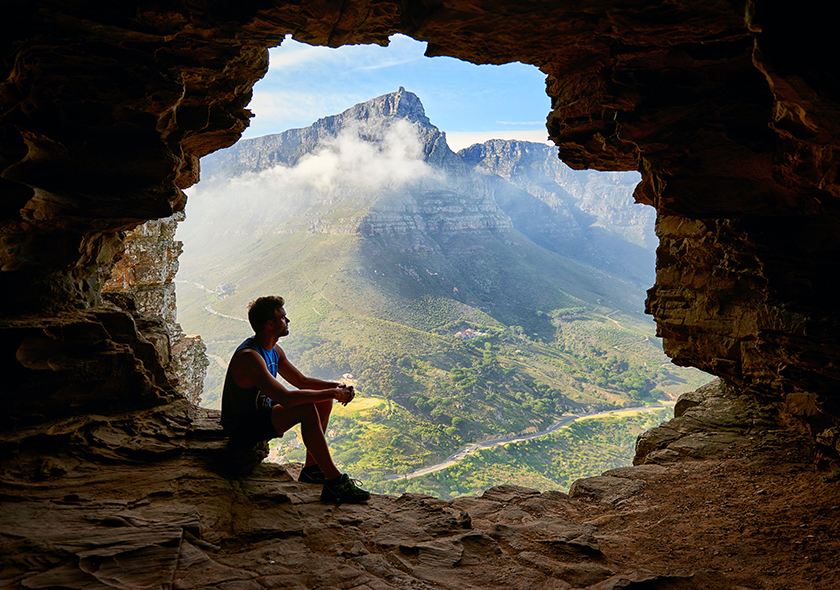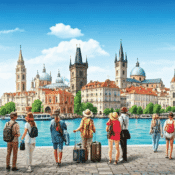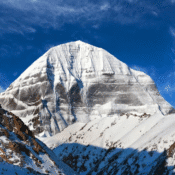Explore Ayodhya’s Tourist Attractions: An Unforgettable Experience

Explore Ayodhya’s Tourist Attractions: An Unforgettable Experience
The home of Lord Ram, Ayodhya, is in the state of Uttar Pradesh. Ayodhya, commonly referred to as Ram Janm Bhoomi, is among the top tourist destinations in Uttar Pradesh. It is a significant Hindu pilgrimage place and is located on the banks of the sacred Sarayu River. For Buddhists as much as Hindus, Ayodhya is very important spiritually. numerous ancient sources have suggested that Gautam Buddha meditated in Ayodhya for many years. Make sure to include visits to Treta ke Thakur temple, Tulsi Smarak Bhawan Museum, Dashrath Mahal, and Sugriva Kila in your Ayodhya tour packages.
Places to Visit In and Around Ayodhya
- Ram Katha Park
- Nageshwarnath Temple
- Mani Parbat
- Ram Temple
- Hanuman Garhi
- Ram ki Paidi
- Varanasi
1. Ram Katha Park

Ayodhya’s Ram Katha Park is a lovely tourist destination. Its beautiful lawns and outdoor theaters span a large portion of the property. Various religious activities, dance performances, poetry readings, devotional programs, and katha recital sessions are held at this location day after day. Ram Katha Park hosts kid-friendly pop and cultural events. It is a venue where artists, both domestic and foreign, can display their abilities. Many come from all around the city to this amphitheatre because it offers a break from the hustle and bustle of the city.
2. Nageshwarnath Temple

The son of Lord Rama, Kush, created this shrine at Ram ki Paidi. One of the oldest temples in Ayodhya is Nageshwarnath Temple which is devoted to Lord Shiva. One of Lord Shiva’s many names is Nageshwar Nath, which translates to “lord of snakes.” Every year during Shivratri, Hindu devotees conduct the Shiv Baraat parade and pay homage at this temple. For Hindu devotees, it is one of the most treasured locations and well-known holy sites in Ayodhya.
3. Mani Parbat

Mani Parbat came into being when Lord Hanuman moved a mountain to obtain Sanjeevani, or a healing plant, to treat Lord Ram’s brother Laxman’s wounds. Mani Parbat, a small portion of which Lord Hanuman carried for Sanjeevani, is said to have fallen in Ayodhya, according to the Great Indian Epic, the Ramayana. With its amazing views from the summit, it is one of Ayodhya’s most stunning tourist sites.
4. Ram Temple

Ram Janmabhoomi, or the birthplace of Lord Ram, is Ayodhya. Encircling Ayodhya is the Sarayu River, which is revered as a holy river. Hindu pilgrims travel from all across the nation to this location, particularly during Ram Navami, to bathe in this sacred river. One of the top attractions in Ayodhya in the near future will be Ram Temple. The temple’s 28,000 square foot footprint and 161-foot height make it the largest temple in India. Inauguration is scheduled for 2024. This temple is being built using Ram Shilas, which is one of its most distinctive features. These are bricks with Lord Rama’s name engraved on them. Given the numerous tales and controversies surrounding it, it is an upcoming tourist destination that is being constructed in Ayodhya. It will soon be accessible to all followers of Hinduism and feature a section devoted to telling the tale of Lord Rama.
5. Hanuman Garhi

One of the most significant sites to see in Ayodhya is Hanuman Garhi. As the greatest of Lord Rama’s devotees, Hanuman Garhi is the first place devotees who travel to the Ram Nagri will undoubtedly visit. Since it is customary to visit Hanuman Garhi before visiting the Ram Temple here, Hanuman Garhi, a temple dating back to the 10th century, is one of the most popular places in India to visit in honor of Lord Hanuman. Many think that Lord Hanuman resided at the location of the temple in order to protect Ayodhya. There is a stunning statue of Lord Hanuman there, perched on his mother Anjani’s lap.
6. Ram ki Paidi

This well-known location in Ayodhya, which consists of ghats on the Sarayu River’s bank, is frequented by many devotees. In 1984, it was constructed so that Ram enthusiasts might bathe in this hallowed river. Many people think that the Sarayu River cleanses your soul and washes away all of your sins. The Sarayu River is bordered by twenty-five bathing ghats. On Purnima, the day of the full moon, it appears incredibly lovely. When visiting Ram ki Paidi, there are plenty of hostels and locations to change clothes in the area. Indulge in North Indian cuisine at a number of eateries close to these locations.
7. Varanasi

The world’s oldest surviving city, Varanasi, often known as Kashi, is the most popular tourist destination close to Ayodhya. It is well regarded as India’s spiritual capital. Known locally as Benaras, Varanasi is one of the seven sacred towns of Hinduism. It is situated near the Ganges’ western banks. The Buddhist community stands great importance on this divine city. This is because the first sermon delivered by Lord Gautam Buddha took place in Varanasi and is currently being held at Sarnath. It is a given that many visitors to Ayodhya will stop by this vibrant and subdued city. Given that its colourful residents, ghats, and temples are well-known. Many Hindu believers think that bathing in the Ganga river can purify one’s soul for all of one’s life.
How to Reach Ayodhya?
- By Road: Taking the Ayodhya tour within the state, numerous state and private buses are plying between all the major cities of Uttar Pradesh to Ayodhya.
- By Air: Lucknow Airport is the nearest major airport to Ayodhya. You can reach Ayodhya by taking a flight to Lucknow airport that is 130 km away and then board a cab from there to Ayodhya.
- By Train: There are regular trains to Ayodhya Junction from major cities across the country.
All Categories
- Adventure
- Australia
- City Tours
- Customized Holidays
- Domestic
- Dubai
- Europe
- Food
- Forex
- Group Holidays
- Honeymoon
- India
- Indonesia
- Informative
- International
- Korea
- Leisure Holidays
- Life Style
- Malaysia
- Mauritius
- philippines
- Pilgrimage
- places to visit
- Remittance
- Singapore
- Thailand
- Things To Do
- Turkey
- Valentine
- Varanasi
- Vietnam
- VISA
- Weekend Getaways
- Wild Camping
Recent Posts
Upcoming Long Weekends in India Till May 2026 & How to Plan Quick Getaways!
The Best LGBTQ+ Friendly Travel Destinations to Explore in June and Beyond
Kailash Mansarovar Yatra 2026: Complete Guide for Indian Pilgrims!!
Tags






